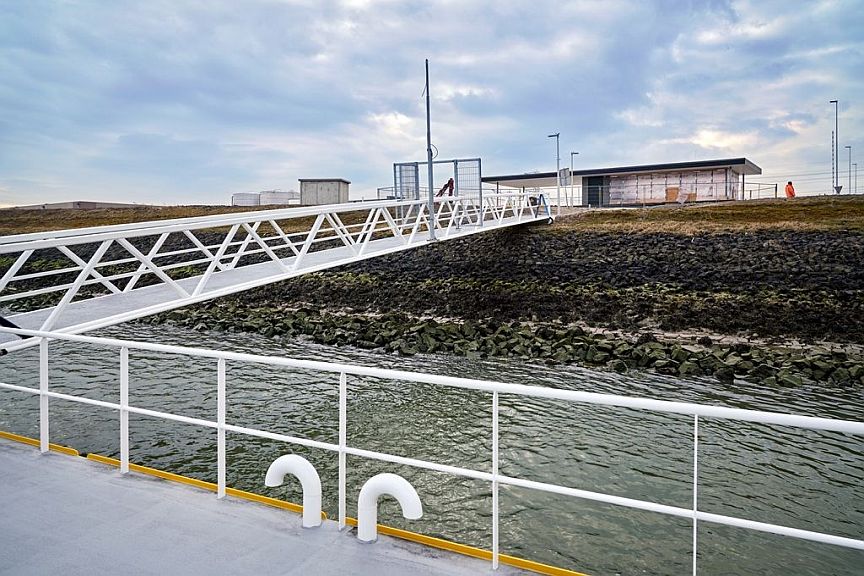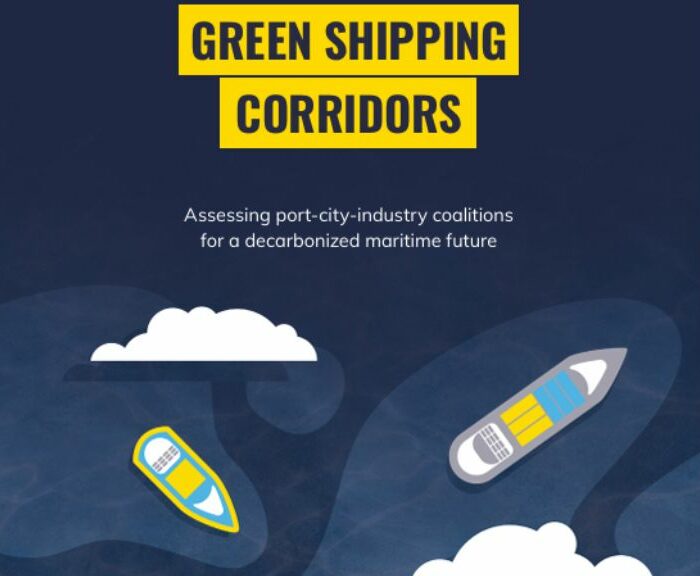 Sustainable mobility is one of the priorities for the European Commission. Hence, there are several EU-financed projects focusing on this issue, fostering cooperation and sharing good practices between different cities. It is the case of the Civitas family of projects, of which one is focused on specific port-city mobility challenges, the Civitas Portis. As Dirk Engels, moderator from our mobility webinar, explains in his article, the approach defended in the project, based on smart data sharing for better governance and planning, has produced clear positive results in the five cases: Aberdeen, Antwerp, Constanta, Klaipeda and Trieste.
Sustainable mobility is one of the priorities for the European Commission. Hence, there are several EU-financed projects focusing on this issue, fostering cooperation and sharing good practices between different cities. It is the case of the Civitas family of projects, of which one is focused on specific port-city mobility challenges, the Civitas Portis. As Dirk Engels, moderator from our mobility webinar, explains in his article, the approach defended in the project, based on smart data sharing for better governance and planning, has produced clear positive results in the five cases: Aberdeen, Antwerp, Constanta, Klaipeda and Trieste.
Funded in the framework of the CIVITAS Initiative dedicated to cleaner and better transport in Europe and beyond, the CIVITAS PORTIS project implemented over 40 mobility and logistic strategic measures in the partner port cities of Aberdeen, Antwerp, Constanta, Klaipeda and Trieste. This approach has proven to be a game changer for sustainable mobility in all of the PORTIS cities, leading the way to clean and liveable cities, and undoubtedly has a strong take-up potential for other port cities and cities with a comparable traffic generator. Analysis of the approaches showed evidence that the CIVITAS PORTIS measures will result in an improved functioning of the cities and ports with the introduction of innovative strategies and measures in the different CIVITAS policy fields. This will have a strong positive impact on the way stakeholders cooperate and citizens make use of and perceive the transport system, on the transport system itself, and on related aspects such as environment, economy and energy.
The CIVITAS PORTIS sustainable port city
First of all, the CIVITAS PORTIS approach will inspire other port cities to build up and strengthen a strong framework for a sustainable port-city including a strong governance model and a sound data management system.
Depending on the typology of the port city, defined by port ownership, the scale of the port in relation to the city, and the city and port traffic and special interaction, different measures will lead to a strong governance structure. Key elements of this framework are integrated policy decision lines and planning of SUMPS, and common Masterplans and strong technical cooperation to develop and manage the multi-modal transport system. This more formal governance structure is supported by informal discussion platforms integrating local and regional approaches e.g. new collaborative institutional structures on different operational and decision levels, workshops, focus groups, events, knowledge-sharing platforms and intensive cooperation with all stakeholders. The integrated SUMP is the basis for the implementation of a common sustainable mobility vision with integrated packages of measures.
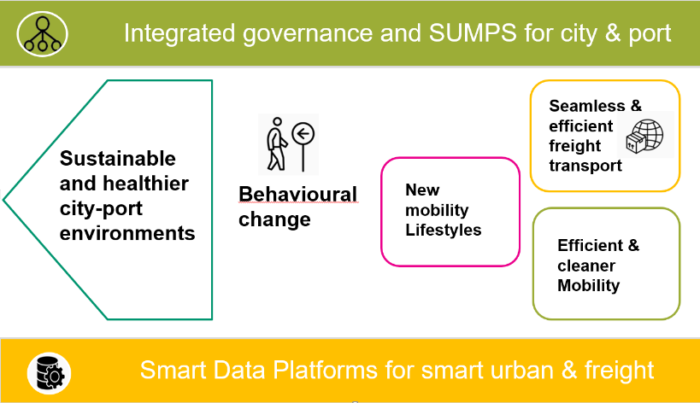
Responding to the current and future challenge to handle planning, historical, and real-time mobility-related data required to manage our multi-modal mobility system, and to inform and push optimal mobility behaviour and choices of stakeholders and end users, different layers of data platforms are built up in a gradual and integrated way. Key elements for such smart data systems are good organisational concepts with clear agreements or licences dealing with the way data are provided and used by public and private stakeholders, and robust technical networks to transmit data. Data are defined according to existing and newly developed standards with intelligent formats to embed data of different sources in a common platform. New EU standards will support cities and regions to ease further integration of the data.
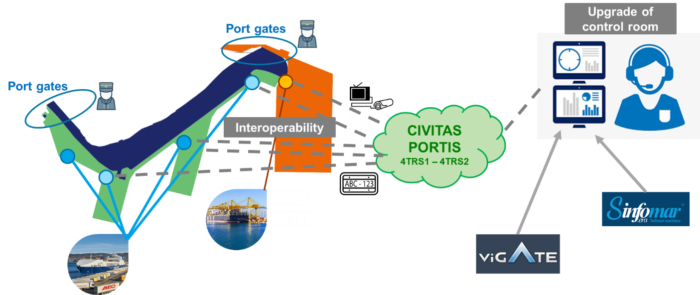
Based on these smart data platforms, smart applications will be operational both for the planning, design, and functioning of performant multi-modal mobility systems as well as to inform stakeholders, businesses, citizens and commuters on mobility possibilities and push them towards sustainable choices.

These smart applications are used as strong tools in the intensive, permanent, and inclusive behavioural change campaigns to encourage individuals to use alternative transport modes, such as active or collective travel, rather than using the private car. This is supported by intensive interactions with local communities to discover any barriers or challenges to modal shift, to optimise the range of products and services as well as the focus of the campaigns. Port companies and other freight- generating or logistic companies are also involved in an intensive and permanent interaction with the city. To this end, specific initiatives such as a mobility market place and employers’ platforms are being set up to develop common public-private alternative and sustainable solutions for road traffic; both for goods and for the trips of employees.
Within the CIVITAS PORTIS cities, cycling and walking is the basic urban mode, including for commuting trips to the port. All citizens, visitors, stakeholders and businesses perceive it that way and an appropriate and sufficient physical infrastructure is in place, such as wide, safe and consistent cycle tracks, safe pedestrian footways and crossings, supporting services like a cycling bus to cross the port canal, and car-free lively public spaces in the cities.
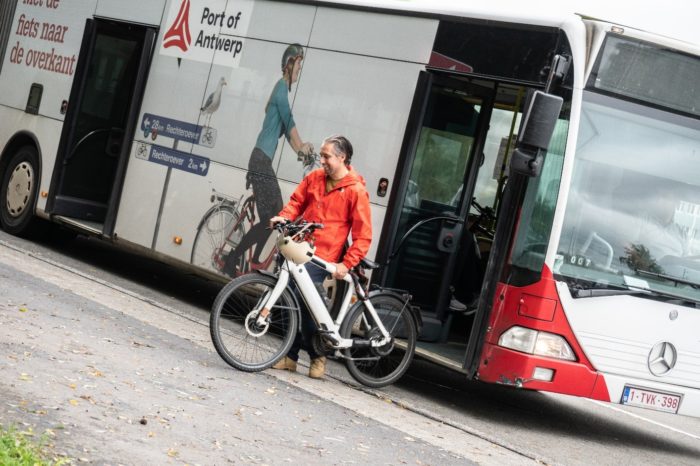
The backbone of the larger urban and regional transport system for citizens and visitors is a performant public transport system with full priority and high frequencies. Integrated hubs guarantee the link with the other transport modes, assuring an optimal sustainable use of the multi-modal transport system with limited car use in the sensitive urban areas.
Road-based public transport and passenger car traffic is optimally managed with a performant traffic management system with well-chosen priority rules for all interacting modes. As this is linked to the data platform, users get reliable planning and real-time multi-modal transport information supporting sustainable mobility behaviour.
Port cities also have different strategies in place to manage the freight traffic, specifically in relation to the port, to avoid or minimize the negative effects of this kind of traffic on the urban living areas. A dynamic signage system combined with route guidance leads the trucks via dedicated routes that link the port area with the TEN-T network, while intelligent access schemes are implemented to keep trucks in waiting areas around the city until they can enter the port gates, avoiding congesting and related noise and emission in the urban areas around the port. Above that, part of the freight transport is replaced by inland shipping towards hubs in the region.
When synthesising these elements, we can conclude that integration is the key principle for the implementation of the CIVITAS PORTIS concept; integration of decisions and planning, integration of transport modes, inclusive mobility for all; and the integration of measures strengthening each other to achieve the integrated goal of a clean, smart, liveable and dynamic port-city.
Expected impacts towards a clean, smart, and integrated mobility
The effective impact in a city or region implementing the CIVITAS PORTIS strategies will depend on a range of contextual factors. Based on the findings in the CIVITAS PORTIS cities, it is expected that port-cities with a successful take-up of the CIVITAS PORTIS measures will benefit from a significant improvement of their mobility system leading towards a clean, smart, integrated mobility supporting a liveable city environment and a strong economy. The observed changes in the PORTIS cities can already give an indication of the changes to be expected.
First, there is a strong increase of awareness and acceptance among citizens for sustainable mobility solutions, and a significant behavioural change resulting in a higher modal share for public transport and even more so for cycling. In Antwerp, for example, where cycling is already quite popular, cycling shares raised from 27% to 35%, with more significant increases for port workers, from 6% to 16% of the total trips. In Aberdeen and Trieste, where cycling is rather limited, we have observed increases of cycling shares from 1-3% to 2-4%. In all of the PORTIS cities, the car is less used; with observed decreases of 5 to 10% in Trieste, Antwerp and Aberdeen.
The strategies have a clear impact on the environment; with improved air quality levels in the centre areas of the cities due to the reduction of the number of cars (in Antwerp also because of the cleaner vehicles pushed by the Low Emission Zones). A reduction in transport emissions CO2 in the city/port interaction zone of Klaipeda of 7.5% was observed.
Measures reduced the freight traffic in the living areas of the cities with enhancements to freight routing away from the city centre with 11% in Aberdeen, and a reduction of freight road traffic in the city of Antwerp with 3 100 truck trips per month.
The PORTIS approach also results in a positive evolution of the employment in city and port, with an observed growth of employment of 1 to 7% in Aberdeen, Antwerp, Klaipeda, and Trieste. Mobility has proven to be very important both for the accessibility of the port for freight transport and the mobility of employees of the port-related businesses.
It is important to note that these figures give an indication of the evolution to be expected in port cities taking up the CIVITAS PORTIS strategies. Indeed, the observed changes in the CIVITAS PORTIS cities are changes that occurred within the rather short term of the project, whereas the qualitative evaluation of the implemented measures indicates a further, far-reaching evolution to be expected on the longer term.
More info on Portis measures and the result of the strategies can be found : https://civitas.eu/portis
More information on Goal 3 of the AIVP Agenda 2030, about sustainable mobility

